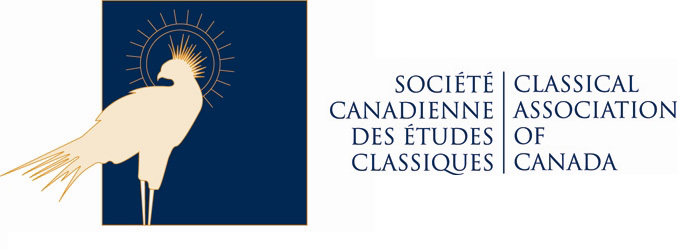Call for Papers: “Epigraphic Texts and Archaeological Contexts in the Graeco-Roman World”
The Society for Classical Studies 2023 Annual Meeting
January 5-8, 2023
New Orleans
Call for Papers for a Panel Sponsored by the
American Society of Greek and Roman Epigraphy (ASGLE)
“Epigraphic Texts and Archaeological Contexts in the Graeco-Roman World”
Organized by Jonathan Edmondson (York University) (jedmond@yorku.ca)
One of the most fruitful recent developments in Greek and Roman epigraphy has been the acknowledgement that more attention needs to be paid to the archaeological aspects of inscribed texts. Inscriptions ought to be studied not just as texts, but also as cultural artefacts. As such, inscribed monuments contributed towards the self-definition of individuals, families and communities within the Graeco-Roman world. Furthermore, the meaning of inscribed texts was significantly enhanced by the physical contexts in which they were displayed, while physical spaces were themselves rendered more meaningful by the presence of inscribed texts.
The aim of this panel is to explore the various ways in which inscribed texts of all types were displayed in their original physical contexts, and how these settings made a significant contribution towards their meaning and impact in their urban, suburban or rural contexts. The panel seeks to incorporate papers treating as wide as possible a range of types of inscriptions from a variety of geographical areas and historical periods. How and where were inscribed texts displayed and how did that choice enhance their meaning? How does an appreciation of the physical context contribute to a fuller understanding of the inscribed text and how did inscriptions enhance the visual impact of the space in which they were set up? The panel, it is hoped, will explore both public, monumental inscriptions as well as more private texts set up by individuals of middling or lower class. Papers may also explore the methodological difficulties and implications of reconstructing in full the physical contexts in which inscriptions not found in situ were once displayed.
Abstracts should be a maximum of 500 words (bibliography excluded), suitable for a 20-minute presentation. Please follow the SCS “Guidelines for Authors of Abstracts” (https://classicalstudies.org/annual-meeting/guidelines-authors-abstracts) and ensure that no reference is made to the author’s identity.
Please send your anonymous abstract, as a Word or PDF e-mail attachment, to Jonathan Edmondson at jedmond@yorku.ca by March 15, 2022. Abstracts will be evaluated anonymously by two reviewers. (Please note that authors submitting abstracts must be SCS members in good standing and will need to register for the 2023 meeting.)
Congrès annuel de la Society for Classical Studies 2023
5-8 janvier, 2023
New Orleans
Appel à Communications de l’
American Society of Greek and Roman Epigraphy (ASGLE)
“Textes épigraphiques et contextes archéologiques
dans le monde gréco-romain”
Organisé par Jonathan Edmondson (Université York)
L’un des développements récents les plus fructueux de l’épigraphie grecque et romaine a été la reconnaissance de la nécessité d’accorder une plus grande attention aux aspects archéologiques des textes inscrits. Les inscriptions doivent être étudiées non seulement comme des textes, mais aussi comme des artefacts culturels. En tant que tels, les monuments inscrits contribuaient à l’auto-représentation des individus, des familles et des communautés dans le monde gréco-romain. En outre, la signification des textes inscrits était considérablement renforcée par les contextes physiques dans lesquels ils étaient exposés, tandis que les espaces physiques étaient eux-mêmes rendus plus significatifs par la présence de textes inscrits.
L’objectif de ce panel est d’explorer les diverses manières dont les textes inscrits de tous types ont été présentés dans leur contexte physique d’origine, et comment ces cadres ont contribué de manière significative à leur signification et à leur impact dans leur contexte urbain, suburbain ou rural. Le panel cherche à intégrer des articles traitant d’un éventail aussi large que possible de types d’inscriptions provenant d’une variété de zones géographiques et de périodes historiques. Comment et où les textes inscrits ont-ils été exposés et comment ce choix a-t-il renforcé leur signification ? Comment l’appréciation du contexte physique contribue-t-elle à notre meilleure compréhension du texte inscrit et comment les inscriptions ont-elles renforcé l’impact visuel de l’espace dans lequel elles étaient situées ?
Le panel, nous l’espérons, explorera aussi bien les inscriptions publiques et monumentales que les textes plus privés mis en place par des individus de classe moyenne ou inférieure. Les communications pourront également explorer les difficultés méthodologiques et les implications de la reconstitution complète des contextes physiques dans lesquels les inscriptions non trouvées in situ étaient exposées à l’époque gréco-romaine.
Les résumés doivent comporter un maximum de 500 mots (bibliographie non comprise), adaptés à une présentation de 20 minutes. Veuillez suivre les “Guidelines for Authors of Abstracts” de la SCS (https://classicalstudies.org/annual-meeting/guidelines-authors-abstracts) et veiller à ce qu’aucune référence ne soit faite à l’identité de l’auteur.
Veuillez envoyer votre résumé anonyme, sous forme de pièce jointe en Word ou PDF, à Jonathan Edmondson (jedmond@yorku.ca) avant le 15 mars 2022. Les résumés seront évalués de manière anonyme par deux membres de l’ASGLE. (Veuillez noter que les auteurs qui soumettent des résumés doivent être des membres de la SCS en règle et devront s’inscrire au congrès annuel de la SCS de 2023).
Follow Us
Copyright © 2023 The Classical Association of Canada / Société Canadienne des Études Classiques
All Rights Reserved | Privacy Policy | Politique de confidentialité
